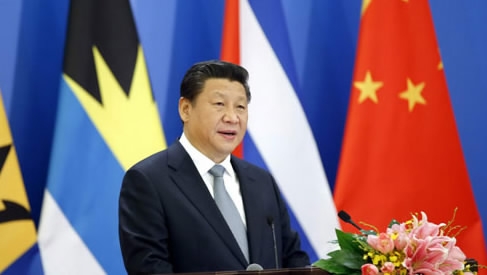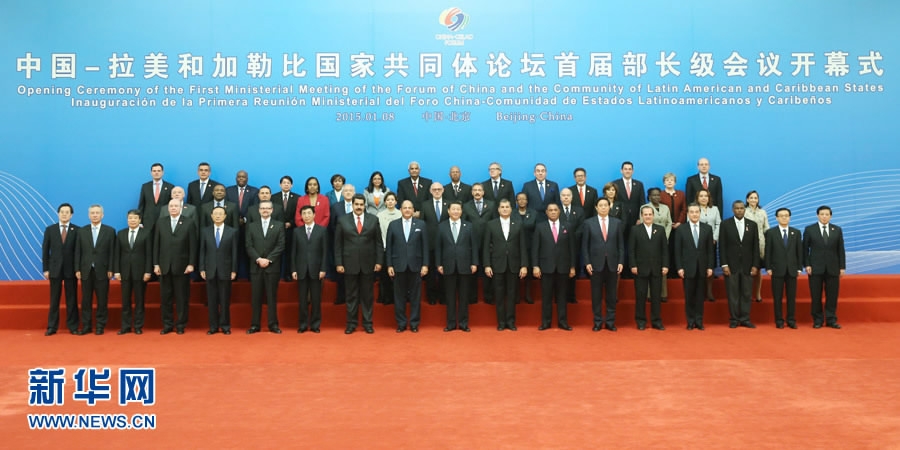
Opinions
16:27, 21-Jan-2018
Opinion: Constructing a community of common destiny for China and Latin America
Guest commentary by Jiang Shixue

The second ministerial meeting of the China-Latin American and the Caribbean States (CELAC) Forum took place in Santiago, Chile on January 19 to 22. This is the first major gathering between China and Latin America since the 19th National Congress of the Communist Party of China.
It is not an exaggeration to say that, in terms of quantity and quality, China-Latin America relationship has now come to the best stage since 1492, the year the New World was “discovered” by Columbus. No wonder China has put forward the idea of establishing the Community of Common Destiny for China and Latin America.
In order to reach the long-term ambitious goal of building this community, or to further promote the bilateral ties between China and Latin America, both sides need to ponder upon the following issues:
First, can both CELAC and individual countries in the region design a more specific strategy to promote bilateral relations with China?
China has published two policy papers-one in 2008 and the other in 2016. In these two strategic documents, China laid out a very clear roadmap for its efforts to develop bilateral ties. CELAC, along with its members, have no such strategy at all though it has expressed strong desire to promote its relations with China. Needless to say, a Latin American strategy will benefit the interests of both sides in the long run.

January 8, 2015: Group photo at the opening ceremony of the first Ministerial Meeting of the Forum of China and the Community of Latin American and the Caribbean States, in Beijing, China./ Xinhua Photo
January 8, 2015: Group photo at the opening ceremony of the first Ministerial Meeting of the Forum of China and the Community of Latin American and the Caribbean States, in Beijing, China./ Xinhua Photo
Second, is it possible or necessary to “go beyond complementarity”?
Complementarity should always be the foundation of the economic cooperation between China and CELAC/Latin America. While bilateral trade relations are moving forward, some Latin Americans have been complaining that the trade pattern is not in favor of Latin America and it needs to “go beyond complementarity.”
It is true that trade relations between China and Latin America need to be further diversified. That is to say, Latin America must reduce its reliance on selling commodities, raw materials and primary products. However, it is necessary to understand that, in the age of globalization, economic cooperation in the field of trade and investment between/among any partners must make good use of their comparative advantages. Competitiveness matters. To strengthen competitiveness, any country must rely on its comparative advantage, i.e., the foundation of complementarity.
Third, what should be done to deepen mutual understanding?
Mutual understanding is always the engine of bilateral/multilateral relations among nations. There is no doubt that more and more people from China and Latin America have the interest in learning from each other. However, due to geographical distance as well as the not-so-small differences in languages and political, social and cultural systems, mutual understanding is far from enough, leading to numerous cases of misunderstanding of China.
It is encouraging to see that one of the five links (wu tong, 五通) of the Belt and Road initiative is in the area of people-to-people exchanges. Apart from the governmental organizations, non-governmental players should also move to the center stage of cultural exchanges. Efforts must be doubled to make the existing mechanism of mutual understanding more effective.

Metropolitan Cathedral in Santiago, Chile. /VCG Photo
Metropolitan Cathedral in Santiago, Chile. /VCG Photo
Finally, how can the negative impact of the US factor be defused?
In geopolitical sense, Latin America is always considered by the United States as its backyard. That is why the United States has been quite alert or even worried about China’s presence in Latin America. According to a recent article titled “Trump Steps Up Efforts to Check China Influence in Latin America,” published on the Bloomberg website, US Undersecretary for International Affairs David Malpass asked Inter-American Development Bank President Luis Alberto Moreno why he had selected China to host the bank’s 60th anniversary meeting in 2019.
To diffuse the uneasy attitude of the United States, both China and Latin America need to explain that their bilateral relations do not target against any third party. Moreover, they might try to consider the possibility of constructing a triangulation of cooperation for the three sides.
As a matter of fact, China has an open mind on this matter, In its second policy paper, for instance, China expresses its interest and willingness to develop a trilateral partnership with any players.
(Top image: Chinese President Xi Jinping speaks at the opening ceremony of the First Ministerial Meeting of the Forum of China and the Community of Latin American and the Caribbean States (CELAC), in Beijing, capital of China, Jan. 8, 2015./ Xinhua Photo)
(Jiang Shixue is a professor at Shanghai University. The article reflects the author's opinion, and not necessarily the views of CGTN.)

SITEMAP
Copyright © 2018 CGTN. Beijing ICP prepared NO.16065310-3
Copyright © 2018 CGTN. Beijing ICP prepared NO.16065310-3